#Arun Parmar
Photo




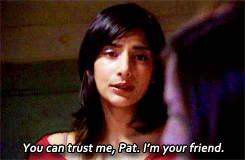



#bad girls uk#arun parmar#pat kerrigan#rebecca hazlewood#liz may brice#pat i love ur grumpy self but please appreciate the ride or die gift that arun is#fjdslfjsljdflsjl#series seven#7x11#bad girls#my gifs
15 notes
·
View notes
Text
Shastri, coaching staff could leave U.K. on Wednesday
Shastri, coaching staff could leave U.K. on Wednesday
Head coach Ravi Shastri and his support staff colleagues Bharat Arun and R Sridhar could leave for India on Wednesday provided they have two two negative RT-PCR reports before departure.
Source link
View On WordPress
#bharat arun#cricket news#ecb#icc#ipl#r sridhar#ravi shastri#rt-pcr test#sports news#t20 world cup#yogesh parmar
0 notes
Text
Shastri, coaching staff could leave U.K. on Wednesday
Shastri, coaching staff could leave U.K. on Wednesday
India head coach Ravi Shastri and his support staff colleagues Bharat Arun and R Sridhar are likely to leave for India on Wednesday provided they have two negative RT-PCR reports prior to their departure date.
Shastri, who tested positive for COVID-19 prior to the fourth Test at the Oval, has been in quarantine since September 4 and is expected to complete his 10-day isolation period along with…
View On WordPress
#bharat arun#cricket news#ecb#ICC#ipl#r sridhar#Ravi Shastri#RT-PCR test#sports news#T20 World cup#yogesh parmar
0 notes
Text
Did coach Ravi Shastri and skipper Virat Kohli pay enough heed to BCCI diktat on health protocols? | Cricket News
Did coach Ravi Shastri and skipper Virat Kohli pay enough heed to BCCI diktat on health protocols? | Cricket News
NEW DELHI: The cancellation of the fifth Test between India and England on Friday due to a COVID-19 outbreak in the visitors’ camp has led to questions being raised over head coach Ravi Shastri‘s book release function in London where health safety protocols went for a toss. It was after that book release event at a five-star facility ahead of the fourth Test that Shastri along with bowling coach…
View On WordPress
0 notes
Text
Trending Entertainment News Today —Nikki Tamboli allegedly fought with Rahul Vaidya over his underwear; Thalapathy Vijay fans declare Master a 'blockbuster' | Bollywood Life
Trending Entertainment News Today —Nikki Tamboli allegedly fought with Rahul Vaidya over his underwear; Thalapathy Vijay fans declare Master a ‘blockbuster’ | Bollywood Life
It’s that time of the day when we bring to you the trending entertainment news. Amitabh Bachchan, Nora Fatehi, Neha Kakkar, Thalapathy Vijay, Nikki Tamboli, Rahul Vaidya, Disha Parmar and others are a part of our top entertainment news today. So read on to know more about today’s newsmakers Also Read – Bigg Boss 14: Did Nikki Tamboli say she did fight with Rahul Vaidya over his underwear?
Bigg…

View On WordPress
#Abhinav Shukla#Amitabh Bachchan#Arun Vijay#Disha Parmar#entertainment industry#entertainment news today#Janhvi Kapoor#Karthik Subbaraj#Master#Navya Naveli Nanda#Neha Kakkar#newsmakers of the day#Nikki Tamboli#Nora Fatehi#Rahul Vaidya#Rakhi Sawant#Thalapathy Vijay#top 5 newsmakers of the day#top entertainment news today#Trending Entertainment News Today#Vijay Sethupathi
0 notes
Text
MORE PHOTOS... GLIMPSES OF MAHA MAHESHWARA PUJA (DAY 3) || 13 APRIL 2021 THE VISION OF BRINGING GLOBAL PEACE AS DECLAR...
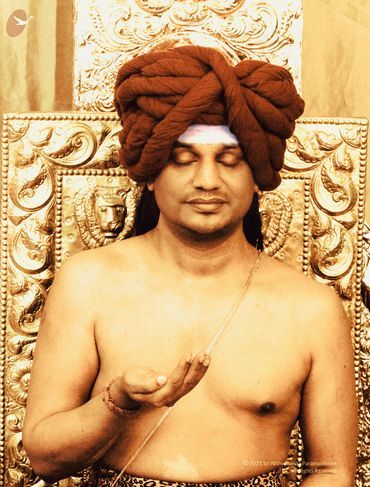
MORE PHOTOS... GLIMPSES OF MAHA MAHESHWARA PUJA (DAY 3) || 13 APRIL 2021 THE VISION OF BRINGING GLOBAL PEACE AS DECLARED ON JAN 1ST, 2021 IS INDEED A RESPONSIBILITY THAT CAN BE ENVISIONED AND EXECUTED IN LIVING REALITY WORLDWIDE ONLY BY THE LIVING INCARNATION OF PARAMASHIVA HIMSELF. THE SPH NITHYANANDA PARAMASHIVAM GRACIOUSLY ACCEPTED THE REQUEST OF KAILASA'S DEPARTMENT OF RELIGION IN COLLABORATION WITH DEPARTMENT OF HUMAN SERVICE OF A SPECIAL MAHA MAHESHWARA PUJA THAT WOULD BE HAPPENING ON 11TH, 12TH AND 13TH OF APRIL 2021. OVER 500 LIVES WERE OFFERED AT THE FEET OF THE SPH NITHYANANDA PARAMASHIVAM DURING MAHESHWARA PUJA. MAHESHWARA PUJA IS HINDUISM'S PRESCRIPTION IN LIBERATION OF THE DEPARTED SOUL. KARMA, AS DEFINED BY THE SPH IS THE CYCLE OF CHOOSING IMPOSSIBILITY OVER POSSIBILITY. KARMA , AS SUCH CARRIED BY ANCESTORS FOR GENERATIONS DOES INFLUENCE THE SOFTWARE AND HARDWARE OF ONE'S LIFE. MAHESHWARA PUJA IS HINDUISM IN ITS FINEST TO LIBERATE YOUR ANCESTORS FROM THEIR KARMAS AND FREE YOURSELF ONCE FOR ALL FROM THE EFFECTS OF THEIR KARMA ON YOU. OFFERING MAHESHWARA PUJA FOR YOURSELF WHILE LIVING ASSURES MUKTHI FOR YOU, AND IMMENSELY SUPPORTS YOU IN LIVING ENLIGHTENMENT (JEEVAN MUKTHI). CONSIDERING THESE COUPLE YEARS HAVE BEEN THE TIPPING POINT FOR A NEW WORLD ORDER, WHEREIN MANKIND AT LARGE ARE FORCED INTO TERROR PHYSICALLY, MENTALLY, PSYCHOLOGICALLY AND CONSCIOUSLY, WHEREIN LOSING LIVES DUE TO PANDEMIC AND ITS EFFECTS, LOSING LIVELIHOOD, THREATENED WITH BIO WAR, ETC - SPIRITUAL HEALING IS A DIRE NEED! HINDUISM PRESCRIBES VARIOUS METHODS FOR GLOBAL HEALING - ONE SUCH IS MAHESHWARA PUJA. NULLIFYING COLLECTIVE NEGATIVITY SIMPLY THROUGH THE PRESENCE OF THE AVATAR AND HIS ORDER OF MONKS. THE SOMASAMBHU PATATI SAYS, IT IS THOUSAND TIMES MORE GREATER THAN OFFERING ANY “SHRAADDHA”, ANY “PINDA”, IN ANY RIVER, ANY WATER-BODY, ANY LAKE, ANY HOLY LAND, ANY HOLY PLACE. OFFERING IT IN THE STOMACH OF THE LIVING INCARNATION OF PARAMASHIVA IS THE BEST FORM OF “PINDA THARPANA” AND 'SHRAADDHA'. IN HINDUISM, SHRAADHHA WHEREIN FOOD IS OFFERED TO SANYASIS FOR THE COMPLETION WITH THE DEPARTED SOULS, IS CALLED MAHESHWARA PUJA. IN THE SOMASHAMBHU PADDHATI, SHRAADHHA VIDHI,SLOKA 3 लिङ्गिनो ब्राह्मणाद्याश्च श्राद्धीयाः शिवदीक्षिताः । LIṄGINO BRĀHMAṆĀDYĀŚCA ŚRĀDDHĪYĀḤ ŚIVADĪKṢITĀḤ । THE TRANSLATION GOES “THE SANNYASIS AND BRAHMANAS WHO HAVE BEEN INITIATED INTO THE SHIVA DEEKSHA ARE ELIGIBLE TO BE APPOINTED AS THE REPRESENTATIVES OF PITRUS IN THE SHRAADHHA.” REGARDLESS OF THE NUMBER OF BIRTHS THE SOUL WOULD HAVE TAKEN, REGARDLESS OF THE SOUL, WHILE EMBODIED HAVING BEEN INITIATED BY THE MASTER OR NOT IN HIS LIFETIME - THE MASTER CAN INTERVENE AND MAKE HIS PRESENCE AVAILABLE IN THE DEPARTED SOUL’S LIFE AND LEAD IT TO ENLIGHTENMENT! THIS IS POSSIBLE ONLY THROUGH MAHESHWARA PUJA! MAHA MAHESHWARA PUJA TODAY WAS OFFERED FOR : Aarav Shah Aaron Abhimanyu Dange Adam Awan "Aditya Nambiar" Ai Ying Huang Alfiya Polesskaya Alicia Morrissey Alka Chawla (Alive And Doing It For Myself) Alkesh Patel Amit Rastogi Ammanta Shah Ramson Anand Kumar "Anatha Rao Jaganadarau" Andrea Hendricks Ang Shi Xian Angela Anirudh Singh Anirudh Singh Gaur Anita Torger Anja Anja Dekkers Anja Matschuck Anjana Lal Anjana Parvathy Annie Bidlenova Antoinette B Anu Chawla (Alive And Doing It For Myself) Anurag Verma Anutosh Biswas Anyan Aravind Narayanan Aravind Sarva Bhowman Archanaa Ananda Arlene Blackman "Arun Kumar" Arun Rathod Ashu "Ashu Goswami" Ashwini Kumar Vij Asit Deshpande Ayodhya L Batajoo B Amutha Batumalai Babita Gaur Barbara Hock Barbara Kužić Bhavna Parmar Bhuvaneshwaran Krishnamoorthy Bhuvaneshwari Prabakar Bin Kai, Ng Bin Yang, Ng Bobbi Ablan Bolatbej Jaxymbetov Bolatbek Jax Bolatbek Jaxymbetov Bowling Lai Bryanne Noritsky Caio Watthier Fernandes Carole Evrard-Bourdon Carrie Chow Li Mei Carrie Li Mei Cătălin Silaghi Dumitrescu Célia Parreira Chan Tsui Wai Jolly (Chan Cheuk Wing Jolly) "Chandra Mohan Singaravelu" Cheang Bee Wah Chellappan.C.V Chen Weiliang Chen Xiu Hua Chenruzhen Chenwanzhen Christian Dubois Christina James Chuan Dong Huang Claudio Sanches Cristina Neira Flores Da Wei Chen Dai Hui "Damir Zeric" Deepak Kumar Deepan Prabhu Babu Devaki Thapaliya Devikarani "Diana Sullivan" Dineshwaran Dixuan Dixuan Chen Donatien Rongemaille Dynatec Australia Pty Ltd E.K.Lim Eddy Faisans Elena Reutova Elizabeth Allen Elizabeth Ware Ellyse Davis Emmanuel Clavreul Eng Keong Lim Erina Marino Eugénie Thérèse Dixit Evelyne Telchid Ewa Andersson Ezequiel Franco Miranda "Fabio Cheung Lim Yem" Fangyu Shi Fatima Ibrahim Felipe Madrigal Francelise Gene Fu Wu Fung Yin Lai Gayathri Mohan Geetanjali Padayachi Geetha Parameshwar Hai Rong Yu Hansa Vaghjiani Hari Chand Balasubramaniam Hariharakrishnan Kr Harini Sivaramakrishnan Harshul Bhatt Heidi Coolen Hejuan Hiranyavarna Nithya Ananda Hong Ling Zhang 张红玲 Hua Li Li Huangxiuhua Hubert Girard Hui Chieh Chen Huijuan Itani Humadevi Sivasamy Hung Li Hui Hung Lin Sheng Hungmui Long Idar Conley Indrani Chatterjee Ines Zimmermann Ivana Cendic Ivana Grebenar Jamie Patel Janarthan Rama Murti Jeanne Lavital Jessica Marie Altamirano Jia Wei Jia Yan Bing Jianxi Sun Jiaxin Xue Jing Guo Jinghua Chi - M Jitka Sotonová Jolanta Pawelec Josiele Watthier Jozef Homola Juan Quiñonez Franco Kanika Vij (Alive And Doing It For Myself) "Karen Ramjohn" Karen Burlingham Karn Inc Kathryn Kern Scholl Kenneth Nelson Kim Emons Kim Yiew Lee Kouxiaolan Krishnavi Potula "Kristijan Baran" Kristijan Baran Kritika Vij (Alive And Doing It For Myself) Lai Tee, Chia Lalita Tatarie Laurent Ngnazo Nolak Lenka Hukalukova Li Mengyao Licheng Lin YANG Lina Forbin Linxiaoming Lixia Hua Lu Chen Lu Yeya "Lucia Samano" Lúcia Kröger Lucia Samano Ma Dhurjati Nithyananda Ma Nithya Maha Adbhutacharitrananda Ma Nithya Maha Buddhananda Ma Nithya Premasindoori Ma Nithya Saralananda Magalie Caron Mahajaya Creations Mahesha Ananda Mahinder Chawla (Alive And Doing It For Myself) Mahitha Reddy Mala Patel Manish Bajpai Manoj Chawla (Alive And Doing It For Myself) Maria Ligia Parise Penteado Maria Lígia Penteado Mariana Maritato Marianne Croisier Marie Marie Anne
from KAILASA's SPH JGM Nithyananda Paramashivam - Posts | Facebook https://ift.tt/2RCDp1b
3 notes
·
View notes
Text
Ladko Ke Naam Ki List Or Boys Name List
Source: https://www.logicalfact.in/ladko-ke-naam/
Hello friends, welcome all of you to a new and interesting article.
It is said that children are the form of God. Similarly, children are naive as well as cute. If we look at the mouths of young children, we do not know that a strange pleasure arises in the mind. So that every person feels good. But if Ladko Ke Naam is as beautiful as his face along with Ladko's mouth, then it will be icing on the cake.
In Hinduism, the name of a person is very important. Because this is the name in the society, which helps to make him talented. There is a belief in Hinduism that a person's name should be named by the scriptures.
The person's qualities-demerit, profit-loss, character, etc. should also be in his name, only then that person's name is considered good. Your character should be known by your name, as well as the meaning of your name should also be reflected in your name. Only then the name of the person is considered all-encompassing.
There are many such parents, who have a lot of trouble in thinking of the names of their children. For this, friends, in this article we are going to share the list of children's names from all the letters from A to Z with you. Along with this, we will also tell you in detail about the meaning of the name of the children starting with each letter.
If you also want to keep a beautiful and cute name of your child, then friends must see the Ladko Ke Naam List below once. This will help you in naming your child.
Ladko Ke Naam Ki List: - List of Boys Names in Hindi
Ladko Ke Naam from A Alphabet
1: - Aadesh, Akshay, Ashish, Abhay, Abhishek, Adarsh, Atul, Ajay, Ajith, Akash, Alok, Aman, Amit, Anand, Ankur, Abhinav, Abhinandan, Anmol, Anshuman, Anuj, Anupam, Ambar, Amitesh, Amod , Amulya, Anandamurthy, Anant, Amitabh, Anupam, Anoop, Anurag, Arjuna, Arihant, Arvind, Arya, Ashutosh, Ashwini, Ashwin, Incredible, Arun, Ayush, Ansh, Amardeep, Arpit, Earne
B Alphabet
2: - Bajrang, Badrinath, Badrinarayan, Balveer, Baldev, Balaram, Balwant, Ballav, Basant, Bikram, Badal, Basu, Vinod, Vinay, Buddha, Baijnath, Brahmagupta, Brahmanath, Babu, Bharat, Bhanu, Bhanupratap, India, Bhima , Bhishma, Bhuvan, Bhuneshwar, Bhoomidhar, Bhairav, Bobby, Physic, Bhavesh
C Alphabet
3: - Chetan, Chandan, Chiranjeev, Chandra, Chandradev, Chandrakant, Chandragupta, Chandrakumar, Chandrapal, Chandraketu, Chandrabhanu, Chandrasekhar, Charan, Chaman
Ladko Ke Naam from D Alphabet
4: - Daksha, Daman, Dayakar, Dayanand, Darshan, Dharmendra, Damod, Damodar, Dixit, Digambar, Dishant, Digvijay, Dinesh, Deep, Ankur, Dilawar, Dilip, Divyanshu, Deendayal, Deenbandhu, Deenanath, Dipankar, Deepak, Devnath , Devendra, Deva, Dwarkesh, Dhanesh, Dharan, Dharmatma, Dhana, Dhanaguru, Dheeraj.
E Alphabet
5: - Ekambar, Ekam, Ekdev, Ek Bandhu, Ekkitra, Eknath, Ekalavya, once, Eravat, Eknath, Ekendra, Eilaputra
F Alphabet
6: - Phagun, Falgun, Phanindra, Phanishwar
G alphabet
7: - Gangadhar, Dnyaneshwar, Gangadatta, Gyanendra, Gange, Gyani, Gangesh, Gyan, Gandharaja, Gaurang, Gandhar, Gaurav, Gambhir, Govind, Gagan, Gorakh, Ganapathi, Gopinath, Gajendra, Gupta, Gajamani, Gautam, Gajadhar, Gokulnath , Ganak, Gokul, Gaya, Gulshan, Garudadhwaj, Gulzar, Garur, Griva, Garvita, Geet, Girindra, Galak, Girish, Ganesh, Giriraj, Girija, Girja, Gangdeep, Gagan, Gurmeet, Govind
H Alphabet to Ladko Ke Naam
8: - Hansnabh, Hansraj, Hanumat, Hanuman, Hanurodh, Hagriva, Hayanand, Harichandra, Harpreet, Harpriya, Harmal, Harshit, Harihar, Harishankar, Harit, Harinam, Harish, Haridas, Haridev, Harshavardhana, Harshit, Hemant, Himvant, Harmal , Harmage, Hirang, Harikesh, Harinath, Hemant, Hagri, Hemchand, Hemat, Harsil, Harman, Harpreet, Himanshu.
I alphabet
9: - Indradatta, Indraputra, Induman, Indraketu, Indrasena, Indra, Indravadh, Ishwar, Indrajit, Indramani, Indrayayu, Indulal, Indumal
J alphabet
10: - Jagam, Jagdamba, Jagat, Jagdish, Jagdeep, Jagan, Jagmohan, Jagbir, Jagannath, Jadoo, Jagpal, Jagraj, Jaduram, Janpal, Jamtram, Janaranjan, Janardan, Jinendra, Jayhind, Jaychand, Jayachandra, Jaydev, Jayadhwaj, Jayapriya , Jayaditya, Jalendra, Jawahar, Jatin, Jitendra, Jeevan, Jinendra, Jeet, Jeevesh, Jogendra, Jwala, Javed, Junaid
K alphabet
11: - Kamesh, Kunwar, Kunwarjeet, Kulranjan, Krishna, Khushal, Kushal, Khemchand, Kaushal, Kartar, Kanwaljeet, Kantilal, Chandan, Kaman, Kamalanayan, Kalidas, Art, Artist, Artist, Kailashnath, Kailash, Kabir, Kamdev, Kedar , Kaushik, Kesari, Kuldeep, Kundan, Kunal, Kavindra, Kaviraj, Kailash, Kalicharan, Kalinath, Kalanath, Karan, Karuna, Kapil, Kapidhwaj, Kanthamani, Kanak, Karthik, Keshav, Karandeep.
L alphabet
12: - Lakhan, Liladhar, Lohit, Lokanetra, Lomash, Lakshnya, Lochan, Love, Lekhraj, Lal, Lavesh, Lavanya, Ladu, Lalit, Lakshyaraj, Lakhan, Lakshmigopal, Lakshmidhar, Lombodar, Lakshmana, Lakshmikant, Lakshminarayana, Lakshmivallabh, Lakshmiraman , Laxmish, lion, lion, lala, lalit, lalla, lav, lavan, lavanakar, lav, lama, lal, lalan, lalit, lokabandhu, lokayan, lochan, lolark, lohitak, lohitaksha, loknath, lokpal, lokaranjan, lokchan
Ladko Ke Naam from M Alphabet
13: - Mangat, Mangal, Mandlesh, Makraksh, Mukund, Manoj, Magan, Manik, Manidweep, Maniraj, Manivar, Manindra, Madan, Mathuresh, Madiraksh, Madhulochan, Madhuvrat, Madhuman, Madhuraj, Madhurit, Manmod, Manmohan, Manhar, Manohar , Manish, Manu, Manush, Mayank, Mayan, Malang, Malay
N alphabet
14: - Nandak, Nandkishore, Nandlal, Nandpal, Nandikesh, Nandeshwar, Nakula, Nagendra, Nachiket, Naman, Narakesari, Naradev, Narpal, Narasimha, Narendra, Naresh, Naval, Navalkishore, Naveen, Nagar, Nagarjuna, Nageshwar, Nachiketa, Narang , Narayana, Nahar, Nikunj, Niket, Nikhil, Nityananda, Nidhish, Nirbhay, Niyogi, Niranjan, Neeraj, Nirala, Nirjar, Nived, Nishakar, Nishad, Nisht, Neerad, Neel, Neelkanth, Neelkant, Neeladhwaj, Sapphire, Neelambar, Nripe L, Nrisinh
O Alphabet
15: - Ojasvi, Omkar, Om, Opendra, Aurangzeb
P Alphabet
16: - Pawan, Param, Paramjeet, Parikshit, Parveen, Pahlada, Prabal, Prabhakar, Prabhu, Prabodh, Pradeep, Prakash, Adverse, Pramod, Pran, Pranav, Prashant, Premal, Pritam, Prithvi, Pukhraj, Puneet, Purana, Padmavat , Padmakar, Padmalochan, Pallava, Pankaj, Prayag, Parmanand, Parmar, Paras, Paritosh, Acquaintance, Park, Pashunath, Pashupati, Pawankumar, Pitambara, Prabhat, Piyush, Parbhajan, Prabhas, Influence, Prabodhan, Exhibition, Pradeep, Prajapati, Prakash, Prashant, Pratap, Pradeep, Pravardhana, Premanand, Priyadarshan, Priyaranjan, Pundarik, Pyarelal, Purushottam, Paresh, Ambiente, Pallava
Ladko Ke Naam from Q Alphabet
17: - Qasim, Qutub, Qutubuddin, Qadir, Qamar, Kaddam, Qayyam.
R Alphabet
18: - Rohit, Rahul, Robin, Rakesh, Rupam, Rudra, Rupesh, Raman, Ranjak, Ranjan, Rakshpal, Rasid, Raghu, Raghunandan, Raghunath, Raghunayak, Raghupati, Raghuraj, Raghuvansh, Rajat, Rajneesh, Rajinikanth, Ratnakar, Ratikant , Randhir, Raman, Rameshwar, Ramesh, Ravikant, Raghukul, Ravindranath, Raghav, Rajan, Rajshree, Rajaji, Raju, Rajendra, Rana, Radhakanta, Radharaman, Ram, Ramchandra, Ramathirth, Ramdas, Ramdev, Ram Vilas, Rambhajan, Raibhaadur, Rawat , Ra And, Rahul, composed, Roshan, Rohtas.
S alphabet
19: - Shankar, Shantanu, Shambhu, Shakti, Sushant, Sharma, Shashank, Shashikant, Sahadeva, Shekhar, Shivkar, Shivnath, Shishupala, Shyam, Shailendra, Srikanth, Sri Krishna, Sridhar, Srirama, Srideva, Srinath, Srinivasa, Shripati, Music, Sangram, Sanjay, Sanjeev, Sandeep, Sachin, Sajan, Satguru, Satya, Satyavan, Satyasheel, Sadashiva, Surya, Samar, Sudhanshu, Sudhakar, Samay, Sumit, Sarvesh, Sagar, Sadhu, Sarang, Savat, Sawan, Sahil, Sidhu, Sitanath , Sukant,
Sukesh, Sukesh, Sukhpal, Sudarshan, Sunil, Suresh, Sumangal, Suraj, Suryakant, Suryadeep, Suryashree, Somnath, Somraj, Somanshu, Sohan
Ladko Ke Naam from T Alphabet
20: - Taksha, Tanay, Tanuj, Tanuprakash, Tanurag, Tanubhav, Tamil, Tarun, Tarunraj, Tilak, Tushar, Tirupati, Tribhuvan, Trilok, Trilochan, Trivedi
U Alphabet
21: - Uday, Udip, Umang, Joy, Upendra, Uma Prasad, Festival, Umang, Ulhas, Uttam, Ujjwal, Udham, Udit, Upanshu, Upendra, Umakant
V Alphabet
22: - Vinay, Vyom, Vaibhav, Vikrant, Vikrant, Vicky, Vinay, Vamana, Vamdev, Descent, Varun, Vashisht, Vedaprakash, Veer, Vibhishan, Vihan, Vikram, Vaikunth, Vipul, Vayan, Vyomash, Vimal, Choice, Vandan. , Vansraj, Varun, Vardhaman, Vasudev, Vasudev, Vijay, Vinay, Vineet, Vinod, Vipul, Vaibhav, Virag, Vivek, Vishwakarma, Vishnu, Veeraketu
W alphabet
23: - Washim, Wakesh, Walid, Vaman, Vasudev, Vasan, Wazir |
Y alphabet
24: - Yogesh, Yogi, Yograj, Yogendra, Yogeshwar, Yogiraj, Yashwant, Yukti, Yaksharaj, Yajat, Yajnapati, Yadunath, Yadupati, Yaduvir, Yaduvanshi, Yemen, Yamesh, Yavan, Yash, Yugesh, Yudhvir, Yoganath, Yuvraj, Yashpal , Yashodhan, Yadunandan, Yatindra, Yashwant, Yajat, Yajnesh
Ladko Ke Naam from Z Alphabet
25: - Zahid, Zakir, Zuhair, Jaheb.
So friends, this was some Ladko Ki Naam or Ladko Ke Naam ki List. We hope that you guys will like this article. If you like this article, then share it with your friends.
So that this article can reach as many people as possible and people can use it. You can reach this article to those people who have become parents and are thinking of their children's names or are searching. So that they can help.
1 note
·
View note
Text
Sourav Ganguly: BCCI chief Sourav Ganguly unsure about fifth Test going ahead | Cricket News
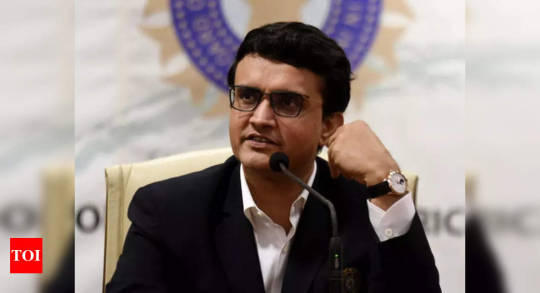
MANCHESTER/KOLKATA: India cricket team's junior physio Yogesh Parmar has tested positive for COVID-19 and BCCI president Sourav Ganguly is unsure whether the fifth and final Test against England, scheduled from Friday, will go ahead or not.
After head coach Ravi Shastri and bowling coach Bharath Arun, another member of the support staff testing positive, forced the team to cancel its practice session on Thursday.
"We don't know if a match will happen at the moment. Hopefully we can get some game," said Ganguly at the book launch of 'Mission Domination' in Kolkata.
The RT-PCR test reports of the players are still awaited.
Parmar testing positive also leaves the team without a physio with the main physio Nitin Patel already in isolation after Shastri contracted the virus during the Oval Test.
It is learnt that the BCCI has asked England and Wales Cricket Board to spare a physio.
"The results of the RT-PCR tests (of players) are expected later in the day depending on which the fate of the game will be decided," said a BCCI source.
The players have been told to remain in their respective rooms as RT-PCR testing is being carried out.
Besides Shastri and Patel, fielding coach R Sridhar and Arun are also isolating in London.
Only batting coach Vikram Rathour was with the team when it won the fourth Test at the Oval on day five.
All the players and the support staff are fully vaccinated but both teams are not operating in strict bio-bubbles with life in the UK almost back to normal.
Shastri is likely to have got the symptoms after attending the launch of his book in the team hotel where outside guests were also allowed.
Arun, Patel and Sridhar attended that function in person.
India lead the five-match series 2-1.
Source link
Read the full article
0 notes
Photo








It is Christmas. Therefore we are all going to enjoy ourselves. Is that understood?
#bad girls uk#i've been meaning to make this since last christmas lol#i was like... hmm... do i make this seem like a cozy christmas special or include the exorcism?? lmao#i did avoid including fenner's ghost tho bc who wants to see that ugly mug#bad girls#series seven#7x13#julie saunders#julie johnston#arun parmar#janine nebeski#darlene cake#phyl oswyn#bev tull#joy masterton#christy mckay#pat kerrigan#my gifs
10 notes
·
View notes
Text
ENG vs IND: Don't know whether fifth Test will take place - Ganguly
ENG vs IND: Don’t know whether fifth Test will take place – Ganguly
BCCI president Sourav Ganguly says he is unsure whether the fifth Test at Old Trafford will take place as the junior physio of the Indian team, Yogesh Parmar, has tested positive for COVID-19.
The Test is scheduled to begin on Friday.
After head coach Ravi Shastri and bowling coach Bharath Arun, another member of the support staff testing positive, forcing the team to cancel its practice session…
View On WordPress
#england india#england vs india fifth test the oval#fifth test#IND vs ENG#india vs england#India vs England 2021#india vs england fifth test the oval#India vs England Live Score#India vs England Live Streaming#India vs England Test Series#Live Cricket Score#manchester#old trafford#sourav ganguly bcci president#sourav ganguly on fifth test#yogesh parmar tests positive for covid-19
0 notes
Text
Sourav Ganguly: BCCI chief Sourav Ganguly unsure about fifth Test going ahead | Cricket News
Sourav Ganguly: BCCI chief Sourav Ganguly unsure about fifth Test going ahead | Cricket News
MANCHESTER/KOLKATA: India cricket team‘s junior physio Yogesh Parmar has tested positive for COVID-19 and BCCI president Sourav Ganguly is unsure whether the fifth and final Test against England, scheduled from Friday, will go ahead or not. After head coach Ravi Shastri and bowling coach Bharath Arun, another member of the support staff testing positive, forced the team to cancel its practice…
View On WordPress
1 note
·
View note
Text
GLIMPSES OF MAHA MAHESHWARA PUJA (DAY 3) || 13 APRIL 2021 THE VISION OF BRINGING GLOBAL PEACE AS DECLARED ON JAN 1ST, 2...
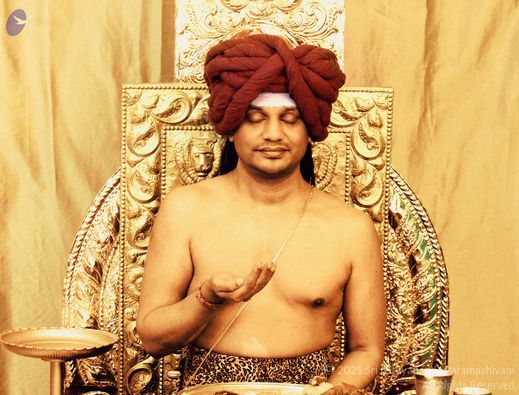
GLIMPSES OF MAHA MAHESHWARA PUJA (DAY 3) || 13 APRIL 2021 THE VISION OF BRINGING GLOBAL PEACE AS DECLARED ON JAN 1ST, 2021 IS INDEED A RESPONSIBILITY THAT CAN BE ENVISIONED AND EXECUTED IN LIVING REALITY WORLDWIDE ONLY BY THE LIVING INCARNATION OF PARAMASHIVA HIMSELF. THE SPH NITHYANANDA PARAMASHIVAM GRACIOUSLY ACCEPTED THE REQUEST OF KAILASA'S DEPARTMENT OF RELIGION IN COLLABORATION WITH DEPARTMENT OF HUMAN SERVICE OF A SPECIAL MAHA MAHESHWARA PUJA THAT WOULD BE HAPPENING ...ON 11TH, 12TH AND 13TH OF APRIL 2021. OVER 500 LIVES WERE OFFERED AT THE FEET OF THE SPH NITHYANANDA PARAMASHIVAM DURING MAHESHWARA PUJA. MAHESHWARA PUJA IS HINDUISM'S PRESCRIPTION IN LIBERATION OF THE DEPARTED SOUL. KARMA, AS DEFINED BY THE SPH IS THE CYCLE OF CHOOSING IMPOSSIBILITY OVER POSSIBILITY. KARMA , AS SUCH CARRIED BY ANCESTORS FOR GENERATIONS DOES INFLUENCE THE SOFTWARE AND HARDWARE OF ONE'S LIFE. MAHESHWARA PUJA IS HINDUISM IN ITS FINEST TO LIBERATE YOUR ANCESTORS FROM THEIR KARMAS AND FREE YOURSELF ONCE FOR ALL FROM THE EFFECTS OF THEIR KARMA ON YOU. OFFERING MAHESHWARA PUJA FOR YOURSELF WHILE LIVING ASSURES MUKTHI FOR YOU, AND IMMENSELY SUPPORTS YOU IN LIVING ENLIGHTENMENT (JEEVAN MUKTHI). CONSIDERING THESE COUPLE YEARS HAVE BEEN THE TIPPING POINT FOR A NEW WORLD ORDER, WHEREIN MANKIND AT LARGE ARE FORCED INTO TERROR PHYSICALLY, MENTALLY, PSYCHOLOGICALLY AND CONSCIOUSLY, WHEREIN LOSING LIVES DUE TO PANDEMIC AND ITS EFFECTS, LOSING LIVELIHOOD, THREATENED WITH BIO WAR, ETC - SPIRITUAL HEALING IS A DIRE NEED! HINDUISM PRESCRIBES VARIOUS METHODS FOR GLOBAL HEALING - ONE SUCH IS MAHESHWARA PUJA. NULLIFYING COLLECTIVE NEGATIVITY SIMPLY THROUGH THE PRESENCE OF THE AVATAR AND HIS ORDER OF MONKS. THE SOMASAMBHU PATATI SAYS, IT IS THOUSAND TIMES MORE GREATER THAN OFFERING ANY “SHRAADDHA”, ANY “PINDA”, IN ANY RIVER, ANY WATER-BODY, ANY LAKE, ANY HOLY LAND, ANY HOLY PLACE. OFFERING IT IN THE STOMACH OF THE LIVING INCARNATION OF PARAMASHIVA IS THE BEST FORM OF “PINDA THARPANA” AND 'SHRAADDHA'. IN HINDUISM, SHRAADHHA WHEREIN FOOD IS OFFERED TO SANYASIS FOR THE COMPLETION WITH THE DEPARTED SOULS, IS CALLED MAHESHWARA PUJA. IN THE SOMASHAMBHU PADDHATI, SHRAADHHA VIDHI,SLOKA 3 लिङ्गिनो ब्राह्मणाद्याश्च श्राद्धीयाः शिवदीक्षिताः । LIṄGINO BRĀHMAṆĀDYĀŚCA ŚRĀDDHĪYĀḤ ŚIVADĪKṢITĀḤ । THE TRANSLATION GOES “THE SANNYASIS AND BRAHMANAS WHO HAVE BEEN INITIATED INTO THE SHIVA DEEKSHA ARE ELIGIBLE TO BE APPOINTED AS THE REPRESENTATIVES OF PITRUS IN THE SHRAADHHA.” REGARDLESS OF THE NUMBER OF BIRTHS THE SOUL WOULD HAVE TAKEN, REGARDLESS OF THE SOUL, WHILE EMBODIED HAVING BEEN INITIATED BY THE MASTER OR NOT IN HIS LIFETIME - THE MASTER CAN INTERVENE AND MAKE HIS PRESENCE AVAILABLE IN THE DEPARTED SOUL’S LIFE AND LEAD IT TO ENLIGHTENMENT! THIS IS POSSIBLE ONLY THROUGH MAHESHWARA PUJA! MAHA MAHESHWARA PUJA TODAY WAS OFFERED FOR : Aarav Shah Aaron Abhimanyu Dange Adam Awan "Aditya Nambiar" Ai Ying Huang Alfiya Polesskaya Alicia Morrissey Alka Chawla (Alive And Doing It For Myself) Alkesh Patel Amit Rastogi Ammanta Shah Ramson Anand Kumar "Anatha Rao Jaganadarau" Andrea Hendricks Ang Shi Xian Angela Anirudh Singh Anirudh Singh Gaur Anita Torger Anja Anja Dekkers Anja Matschuck Anjana Lal Anjana Parvathy Annie Bidlenova Antoinette B Anu Chawla (Alive And Doing It For Myself) Anurag Verma Anutosh Biswas Anyan Aravind Narayanan Aravind Sarva Bhowman Archanaa Ananda Arlene Blackman "Arun Kumar" Arun Rathod Ashu "Ashu Goswami" Ashwini Kumar Vij Asit Deshpande Ayodhya L Batajoo B Amutha Batumalai Babita Gaur Barbara Hock Barbara Kužić Bhavna Parmar Bhuvaneshwaran Krishnamoorthy Bhuvaneshwari Prabakar Bin Kai, Ng Bin Yang, Ng Bobbi Ablan Bolatbej Jaxymbetov Bolatbek Jax Bolatbek Jaxymbetov Bowling Lai Bryanne Noritsky Caio Watthier Fernandes Carole Evrard-Bourdon Carrie Chow Li Mei Carrie Li Mei Cătălin Silaghi Dumitrescu Célia Parreira Chan Tsui Wai Jolly (Chan Cheuk Wing Jolly) "Chandra Mohan Singaravelu" Cheang Bee Wah Chellappan.C.V Chen Weiliang Chen Xiu Hua Chenruzhen Chenwanzhen Christian Dubois Christina James Chuan Dong Huang Claudio Sanches Cristina Neira Flores Da Wei Chen Dai Hui "Damir Zeric" Deepak Kumar Deepan Prabhu Babu Devaki Thapaliya Devikarani "Diana Sullivan" Dineshwaran Dixuan Dixuan Chen Donatien Rongemaille Dynatec Australia Pty Ltd E.K.Lim Eddy Faisans Elena Reutova Elizabeth Allen Elizabeth Ware Ellyse Davis Emmanuel Clavreul Eng Keong Lim Erina Marino Eugénie Thérèse Dixit Evelyne Telchid Ewa Andersson Ezequiel Franco Miranda "Fabio Cheung Lim Yem" Fangyu Shi Fatima Ibrahim Felipe Madrigal Francelise Gene Fu Wu Fung Yin Lai Gayathri Mohan Geetanjali Padayachi Geetha Parameshwar Hai Rong Yu Hansa Vaghjiani Hari Chand Balasubramaniam Hariharakrishnan Kr Harini Sivaramakrishnan Harshul Bhatt Heidi Coolen Hejuan Hiranyavarna Nithya Ananda Hong Ling Zhang 张红玲 Hua Li Li Huangxiuhua Hubert Girard Hui Chieh Chen Huijuan Itani Humadevi Sivasamy Hung Li Hui Hung Lin Sheng Hungmui Long Idar Conley Indrani Chatterjee Ines Zimmermann Ivana Cendic Ivana Grebenar Jamie Patel Janarthan Rama Murti Jeanne Lavital Jessica Marie Altamirano Jia Wei Jia Yan Bing Jianxi Sun Jiaxin Xue Jing Guo Jinghua Chi - M Jitka Sotonová Jolanta Pawelec Josiele Watthier Jozef Homola Juan Quiñonez Franco Kanika Vij (Alive And Doing It For Myself) "Karen Ramjohn" Karen Burlingham Karn Inc Kathryn Kern Scholl Kenneth Nelson Kim Emons Kim Yiew Lee Kouxiaolan Krishnavi Potula "Kristijan Baran" Kristijan Baran Kritika Vij (Alive And Doing It For Myself) Lai Tee, Chia Lalita Tatarie Laurent Ngnazo Nolak Lenka Hukalukova Li Mengyao Licheng Lin YANG Lina Forbin Linxiaoming Lixia Hua Lu Chen Lu Yeya "Lucia Samano" Lúcia Kröger Lucia Samano Ma Dhurjati Nithyananda Ma Nithya Maha Adbhutacharitrananda Ma Nithya Maha Buddhananda Ma Nithya Premasindoori Ma Nithya Saralananda Magalie Caron Mahajaya Creations Mahesha Ananda Mahinder Chawla (Alive And Doing It For Myself) Mahitha Reddy Mala Patel Manish Bajpai Manoj Chawla (Alive And Doing It For Myself) Maria Ligia Parise Penteado Maria Lígia Penteado Mariana Maritato Marianne Croisier Marie Marie Anne Marie-Frédéric Pounidane Pandourangane
from KAILASA's SPH JGM Nithyananda Paramashivam - Posts | Facebook https://ift.tt/2QoCaC8
2 notes
·
View notes
Text
India’s Biggest Slum Successfully Contained COVID-19. But Can Its Residents Survive the Economic Collapse?
amzn_assoc_placement = "adunit0"; amzn_assoc_tracking_id = "yourid-20"; amzn_assoc_ad_mode = "search"; amzn_assoc_ad_type = "smart"; amzn_assoc_marketplace = "amazon"; amzn_assoc_region = "US"; amzn_assoc_default_search_phrase = "mouth mask"; amzn_assoc_default_category = "HealthPersonalCare"; amzn_assoc_linkid = "2c631aa26cb7b0099cdbf225e9a1eb52"; amzn_assoc_search_bar = "false"; amzn_assoc_title = "Coronavirus Protection"; amzn_assoc_rows ="1";
Jayanti Keshav Parmar, a tailor, at his home in Dharavi. His sewing machine sits idle, as no one in the neighborhood can afford to have new clothes stitched this year.
Jayanti Keshav Parmar, a tailor, at his home in Dharavi. His sewing machine sits idle, as no one in the neighborhood can afford to have new clothes stitched this year. Credit — Atul Loke for TIME
Jayanti Keshav Parmar, a tailor who lives in Dharavi, a bustling informal settlement of nearly 1 million low-income residents packed into a one-square-mile area in Mumbai, has been stuck at home since March 25 when the Indian government declared a stringent lockdown to contain the spread of COVID-19.
Before the lockdown, he worked at a store doing alterations and would make about $200 a month, but now he has exhausted his savings. Out of work for over five months, he has not been able to pay the $80 monthly rent on his compact home in Dharavi since March. His sewing machine at home sits idle, as no one in the neighborhood can afford to have new clothes stitched this year. His wife, who had secured some work as a domestic helper in an apartment in Mumbai late last year, was asked to stop coming to the building because of fear of spreading the coronavirus. They are down to cooking one meal a day, the remains of which they eat for lunch the following day. He worries about what will happen if his wife or son fall sick. “If there’s no money for food, how will we pay a big hospital bill?” Parmar says.
Dharavi, often called Asia’s largest slum, is a hyper-dense network of brick homes and small-scale enterprises that sprawl in the shadow of shiny new skyscrapers in the heart of India’s financial capital. Until recently, it was home to a thriving economy, with 20,000-odd factories and small businesses that recycle plastic, make earthen pottery, tan leather, stitch garments, make soap and cook meals. While coronavirus cases in India are soaring—the country is on track to overtake the United States as the nation with the most cases—community engagement and a nimble local government have meant that for now, the virus seems to be contained in Dharavi. But a tough national lockdown declared by Prime Minister Narendra Modi with little warning or preparation has crippled the local economy and residents are struggling to survive.
Story continues
Read more: How the Pandemic is Reshaping India
Dharavi’s slowdown is emblematic of a wider national decline. The Indian economy contracted by 23.9% in the second quarter, the sharpest fall of any major economy during the pandemic. About 21 million salaried employees lost their jobs from April to August, according to the Centre for Monitoring Indian Economy. Those in the informal economy, which constitutes 90% of India’s workforce and is the bedrock upon which the country’s $2.9 trillion economy is built, have suffered the most. Most people in the unorganized sector do not have any savings and live off what they earn each week, making it impossible for them to cope with months of a protracted shutdown. The loss of income and the diminished purchasing power has depressed demand, and because many small businesses in informal settlements like Dharavi sell to others in the area, the blow to the economy is even harsher.
“The Indian government never took the impact of COVID-19 and the lockdown on the unorganized sector into account,” says Arun Kumar, a professor at the Institute of Social Sciences in New Delhi. It could take up to three years for the Indian economy to recover after the pandemic, he says.
Dharavi in late April. The hyper-dense network of brick homes and small scale enterprises, which sprawl in the shadow of shiny new skyscrapers, was home to a thriving economy—until recently. Atul Loke—The New York Times/Redux
For three months after Modi declared a nationwide shutdown, hundreds of small businesses in this city-within-a-city pulled their shutters down. Some of the narrow lanes were barricaded with planks of wood, broken furniture, and wooden vegetable carts, with signs warning outsiders to stay away. People wearing makeshift masks made from old saris and handkerchiefs occasionally converged in informal markets, where wary residents attempted to keep a distance from each other. Though the Indian economy gradually began to reopen in June, many of Dharavi’s small businesses are still struggling to reboot.
Irfan Bhai, who runs a plastic-recycling business in Dharavi, fears a long-term hit to his business. Before the lockdown, his workshop processed about 15 metric tons of plastic scrap each month, from which he made things like plastic buckets, mugs, and plates. His business, like many others, is entwined with the economic fabric of the neighborhood. The machine that crushes the plastic scrap he buys is next door; many of his clients have offices in the area. He had to shut down his factory in March and has lived on savings since.
“Usually this area is constantly active,” Bhai says. “But during the lockdown, 80% of businesses have been closed. Everything has gone silent.”
Now that the lockdown is over, he says he does not have the money to buy the plastic scrap needed to restart the business, and because of the stigma attached to his Dharavi address, he says he has found it hard to secure a bank loan or access government benefits for small businesses. The walls of his workshop are lined with about 2,000 plastic mugs in vibrant colors, but the packages are all collecting dust.
The last time his business suffered such a blow was in 2016, when the Indian government made a sweeping move to invalidate most of the paper currency in circulation, in a widely criticized bid to curb corruption. “India went back 10 years then,” he says. “Now with this lockdown, India has gone back another 10 years.”
Health workers check residents’ temperatures during a mass screening for COVID-19 symptoms in Dharavi in April. Atul Loke—Panos Pictures/Redux
Though Dharavi has emerged as an unlikely story of success lauded for containing the spread of coronavirus, the neighborhood’s battles are far from over. Dharavi was one of the most vulnerable to the spread of the coronavirus in the country because of its high density. While wealthy Indians have been able to shelter in their apartments, Dharavi’s residents live in tightly packed shanties, share public toilets, and rely on community kitchens.
From the beginning, Kiran Dighavkar, the city official leading the response to the virus in Dharavi, knew that standard models of social distancing, contact tracing, and home quarantine would be ineffective here. Instead, his team focused on creating customized solutions that responded to the community’s lived reality. They enlisted local doctors who ran private practices in the area and provided them with the personal protective equipment they needed to re-open their clinics and go door-to-door to screen for people with high temperatures or low oxygen levels. They created health-care facilities and quarantine centers by taking over a sports club, a marriage hall and private hospitals. They set up community kitchens with customized meals so that those fasting during the month of Ramadan could be accommodated. A 200-bed hospital equipped with supplemental oxygen for coronavirus patients was built in just two weeks in a parking lot. The 450 community toilets in the area were sanitized three times a day, and the local government provided free virus tests.
Their efforts paid off. In May, there were an average of 43 new cases each day in the neighborhood. By the third week of August, daily cases were down to six. The local government’s efforts in the area have been commended by the World Health Organization, and officials have been fielding calls from authorities in the Philippines and Kenya for guidance on how to replicate the model in other dense neighborhoods.
“The beauty of the Dharavi model was that it was based on first-hand experiences. Instead of being reactive, we chased the virus,” says Dighavkar, adding that the credit for their success went to community engagement.
«My family was worried about the disease and didn’t want me to return to the city, but I had to come back to work,» said Ishrar Ali, who stitches women’s tops in a garment workshop in Dharavi. Atul Loke for TIME
But economic hardship has forced people back to work in Dharavi, as in the rest of India. While the Indian government, in a bid to restart the economy, has begun to lift lockdown restrictions, the country now has the largest number of daily confirmed cases in the world and over 5.6 million cases in total. The nearly 150,000 migrant workers who left Dharavi for their villages during the lockdown have begun to return to work, and local officials fear a new wave could infect the community. In the past two weeks, Dighavkar has noticed an uptick in cases in Dharavi with 15 new cases on Thursday. “There is a possibility that the infections might be coming back,” says Dighavkar. “In a pandemic like COVID, nobody can guess what will happen next.”
Ishrar Ali, who stitches women’s tops in a garment workshop in Dharavi and shares the room above the workshop with eight other migrants, has recently returned to the city. Ali, 29, who earned about $70 a month, found it hard to sustain himself in the city when the garment workshop shut down in March. He found himself standing in long lines waiting for food handouts from nonprofits or local officials. In April, he took a bus back to his village in Uttar Pradesh, a state in north India, to be with his parents, wife, and child. But there was little work in the village and Ali was forced to return in August.
“My family was worried about the disease and didn’t want me to return to the city, but I had to come back to work,” said Ali. “You have to take some risk to fill your stomach.”
amzn_assoc_placement = "adunit0"; amzn_assoc_search_bar = "false"; amzn_assoc_tracking_id = "yourid-20"; amzn_assoc_ad_mode = "search"; amzn_assoc_ad_type = "smart"; amzn_assoc_marketplace = "amazon"; amzn_assoc_region = "US"; amzn_assoc_title = "Coronavirus Sanitizer"; amzn_assoc_default_search_phrase = "purell sanitizer"; amzn_assoc_default_category = "HealthPersonalCare"; amzn_assoc_linkid = "b45319dac495d29e17b5eff312392025";
Source link
from RSSMix.com Mix ID 11634933 https://ift.tt/305jpWf
0 notes
Text
New top story from Time: India’s Biggest Slum Successfully Contained COVID-19. But Can Its Residents Survive the Economic Collapse?
Jayanti Keshav Parmar, a tailor who lives in Dharavi, a bustling informal settlement of nearly 1 million low-income residents packed into a one-square-mile area in Mumbai, has been stuck at home since March 25 when the Indian government declared a stringent lockdown to contain the spread of COVID-19.
Before the lockdown, he worked at a store doing alterations and would make about $200 a month, but now he has exhausted his savings. Out of work for over five months, he has not been able to pay the $80 monthly rent on his compact home in Dharavi since March. His sewing machine at home sits idle, as no one in the neighborhood can afford to have new clothes stitched this year. His wife, who had secured some work as a domestic helper in an apartment in Mumbai late last year, was asked to stop coming to the building because of fear of spreading the coronavirus. They are down to cooking one meal a day, the remains of which they eat for lunch the following day. He worries about what will happen if his wife or son fall sick. “If there’s no money for food, how will we pay a big hospital bill?” Parmar says.
Dharavi, often called Asia’s largest slum, is a hyper-dense network of brick homes and small-scale enterprises that sprawl in the shadow of shiny new skyscrapers in the heart of India’s financial capital. Until recently, it was home to a thriving economy, with 20,000-odd factories and small businesses that recycle plastic, make earthen pottery, tan leather, stitch garments, make soap and cook meals. While coronavirus cases in India are soaring—the country is on track to overtake the United States as the nation with the most cases—community engagement and a nimble local government have meant that for now, the virus seems to be contained in Dharavi. But a tough national lockdown declared by Prime Minister Narendra Modi with little warning or preparation has crippled the local economy and residents are struggling to survive.
Read more: How the Pandemic is Reshaping India
Dharavi’s slowdown is emblematic of a wider national decline. The Indian economy contracted by 23.9% in the second quarter, the sharpest fall of any major economy during the pandemic. About 21 million salaried employees lost their jobs from April to August, according to the Centre for Monitoring Indian Economy. Those in the informal economy, which constitutes 90% of India’s workforce and is the bedrock upon which the country’s $2.9 trillion economy is built, have suffered the most. Most people in the unorganized sector do not have any savings and live off what they earn each week, making it impossible for them to cope with months of a protracted shutdown. The loss of income and the diminished purchasing power has depressed demand, and because many small businesses in informal settlements like Dharavi sell to others in the area, the blow to the economy is even harsher.
“The Indian government never took the impact of COVID-19 and the lockdown on the unorganized sector into account,” says Arun Kumar, a professor at the Institute of Social Sciences in New Delhi. It could take up to three years for the Indian economy to recover after the pandemic, he says.

Atul Loke—The New York Times/ReduxDharavi in late April. The hyper-dense network of brick homes and small scale enterprises, which sprawl in the shadow of shiny new skyscrapers, was home to a thriving economy—until recently.
For three months after Modi declared a nationwide shutdown, hundreds of small businesses in this city-within-a-city pulled their shutters down. Some of the narrow lanes were barricaded with planks of wood, broken furniture, and wooden vegetable carts, with signs warning outsiders to stay away. People wearing makeshift masks made from old saris and handkerchiefs occasionally converged in informal markets, where wary residents attempted to keep a distance from each other. Though the Indian economy gradually began to reopen in June, many of Dharavi’s small businesses are still struggling to reboot.
Irfan Bhai, who runs a plastic-recycling business in Dharavi, fears a long-term hit to his business. Before the lockdown, his workshop processed about 15 metric tons of plastic scrap each month, from which he made things like plastic buckets, mugs, and plates. His business, like many others, is entwined with the economic fabric of the neighborhood. The machine that crushes the plastic scrap he buys is next door; many of his clients have offices in the area. He had to shut down his factory in March and has lived on savings since.
“Usually this area is constantly active,” Bhai says. “But during the lockdown, 80% of businesses have been closed. Everything has gone silent.”
Now that the lockdown is over, he says he does not have the money to buy the plastic scrap needed to restart the business, and because of the stigma attached to his Dharavi address, he says he has found it hard to secure a bank loan or access government benefits for small businesses. The walls of his workshop are lined with about 2,000 plastic mugs in vibrant colors, but the packages are all collecting dust.
The last time his business suffered such a blow was in 2016, when the Indian government made a sweeping move to invalidate most of the paper currency in circulation, in a widely criticized bid to curb corruption. “India went back 10 years then,” he says. “Now with this lockdown, India has gone back another 10 years.”
Though Dharavi has emerged as an unlikely story of success lauded for containing the spread of coronavirus, the neighborhood’s battles are far from over. Dharavi was one of the most vulnerable to the spread of the coronavirus in the country because of its high density. While wealthy Indians have been able to shelter in their apartments, Dharavi’s residents live in tightly packed shanties, share public toilets, and rely on community kitchens.
From the beginning, Kiran Dighavkar, the city official leading the response to the virus in Dharavi, knew that standard models of social distancing, contact tracing, and home quarantine would be ineffective here. Instead, his team focused on creating customized solutions that responded to the community’s lived reality. They enlisted local doctors who ran private practices in the area and provided them with the personal protective equipment they needed to re-open their clinics and go door-to-door to screen for people with high temperatures or low oxygen levels. They created health-care facilities and quarantine centers by taking over a sports club, a marriage hall and private hospitals. They set up community kitchens with customized meals so that those fasting during the month of Ramadan could be accommodated. A 200-bed hospital equipped with supplemental oxygen for coronavirus patients was built in just two weeks in a parking lot. The 450 community toilets in the area were sanitized three times a day, and the local government provided free virus tests.
Their efforts paid off. In May, there were an average of 43 new cases each day in the neighborhood. By the third week of August, daily cases were down to six. The local government’s efforts in the area have been commended by the World Health Organization, and officials have been fielding calls from authorities in the Philippines and Kenya for guidance on how to replicate the model in other dense neighborhoods.
“The beauty of the Dharavi model was that it was based on first-hand experiences. Instead of being reactive, we chased the virus,” says Dighavkar, adding that the credit for their success went to community engagement.
But economic hardship has forced people back to work in Dharavi, as in the rest of India. While the Indian government, in a bid to restart the economy, has begun to lift lockdown restrictions, the country now has the largest number of daily confirmed cases in the world and over 5.6 million cases in total. The nearly 150,000 migrant workers who left Dharavi for their villages during the lockdown have begun to return to work, and local officials fear a new wave could infect the community. In the past two weeks, Dighavkar has noticed an uptick in cases in Dharavi with 15 new cases on Thursday. “There is a possibility that the infections might be coming back,” says Dighavkar. “In a pandemic like COVID, nobody can guess what will happen next.”
Ishrar Ali, who stitches women’s tops in a garment workshop in Dharavi and shares the room above the workshop with eight other migrants, has recently returned to the city. Ali, 29, who earned about $70 a month, found it hard to sustain himself in the city when the garment workshop shut down in March. He found himself standing in long lines waiting for food handouts from nonprofits or local officials. In April, he took a bus back to his village in Uttar Pradesh, a state in north India, to be with his parents, wife, and child. But there was little work in the village and Ali was forced to return in August.
“My family was worried about the disease and didn’t want me to return to the city, but I had to come back to work,” said Ali. “You have to take some risk to fill your stomach.”
via https://cutslicedanddiced.wordpress.com/2018/01/24/how-to-prevent-food-from-going-to-waste
0 notes
Photo
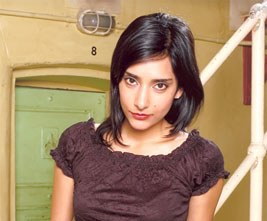
The LezWatch.TV Character of the day is ... Arun Parmar from Bad Girls
0 notes